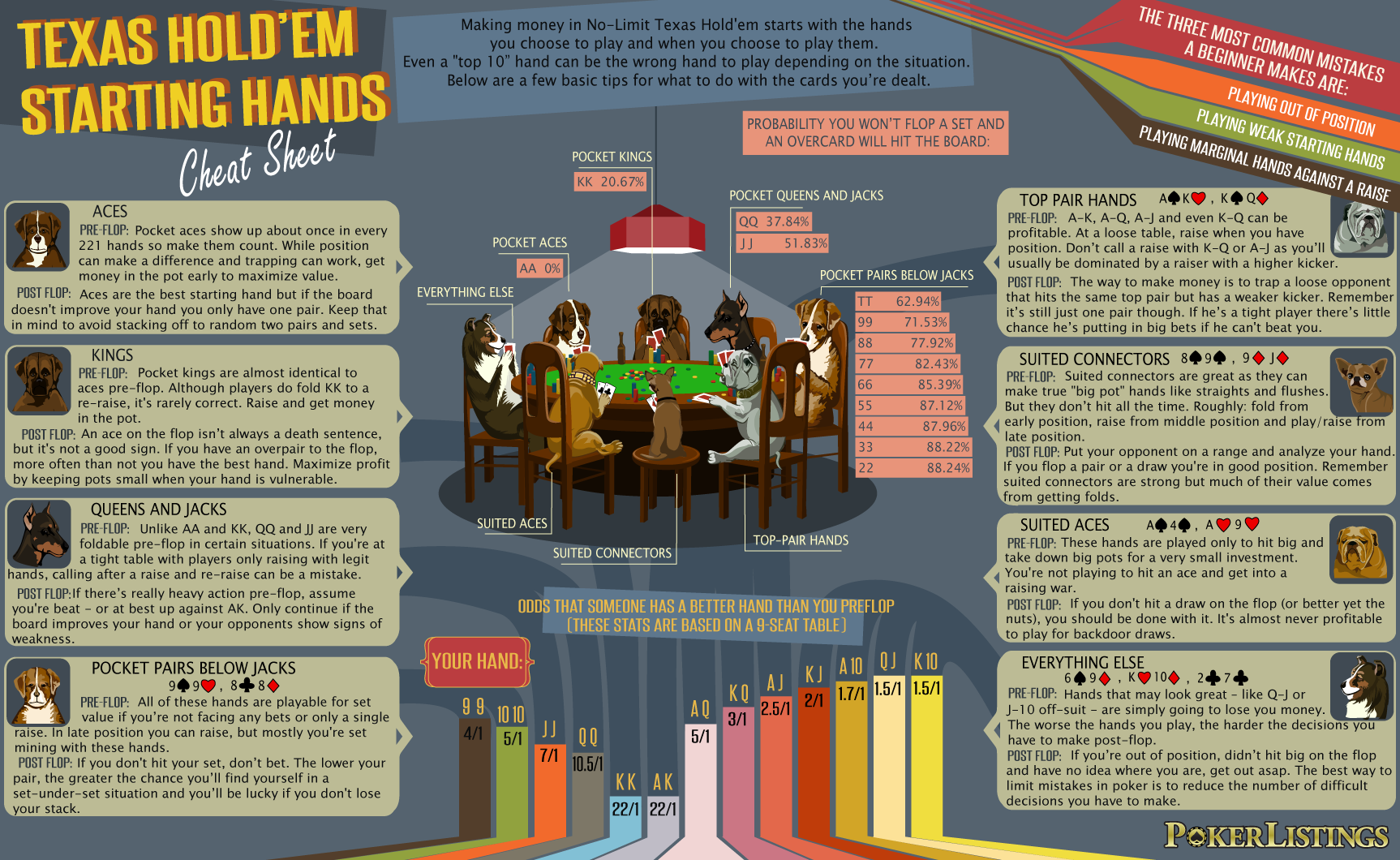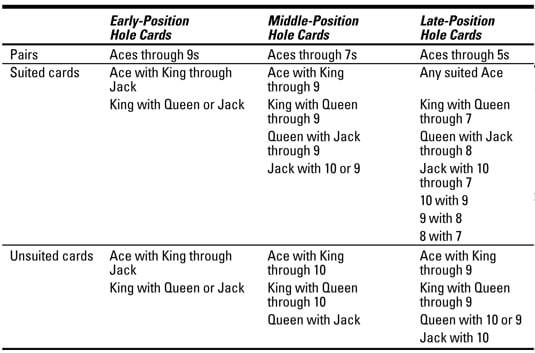
You can figure out your outs and odds for any hand, but here is a quick and dirty list of the most common scenarios: Texas Hold'em Cheat SheetOdds Based on Outs after the Flop If after the flop, you have: Two outs: Your odds are 11 to 1 (about 8.5 percent) A common scenario would be when you have a pair and you are hoping your pair becomes a. Texas Holdem Rankings for All 169 Starting Hands. Ever since the early days of Texas holdem poker, players have attempted to analyze and organize the 169 possible two card starting hands found in the game. One traditional way of doing so involves running thousands upon thousands of simulations in which a particular holdem hand is played out.
This grid compares the strength of a particular Texas hold'em hand (in this case ) against all other hands. Each square represents a pair of opponent cards, and the color represents the relative strength of these two hands — the redder the square, the more likely the opponent hand is to win. These probabilities were computed by enumerating all ≈1.3 trillion hands of heads-up Texas hold'em.
Navigating the Grid
Opponent pair cards are organized along the main diagonal, in a band of 4x4 boxes. Opponent suited cards lie along other diagonals. The dark squares correspond to impossible hands, where a card is duplicated.
Tidbits

If you are holding a pair, an opponent holding any higher pair has essentially the same advantage over you, regardless of the rank of the pair. In fact, compared to (say) a pair of 6s, a pair of 7s is slightly better than a pair of Aces.
While a pair of Aces is the strongest hand averaged over all opponent hands, the single strongest heads-up face-off is a pair of Kings vs a K+2 offsuit.

Playing poker is about playing the odds. The following list gives the odds for outcomes in Texas Hold’em hands. When you realize how heavily the odds are stacked against you, you may want to rethink going all-in before the flop with two suited cards. Use the odds to your advantage:
Odds Of Starting Hands In Texas Holdem

Odds Of Hands In Texas Holdem

Odds Of Poker Hands In Texas Hold'em
1 percent (1-in-100): Percentage of time that no player holds an Ace or a King at a table in a 10-handed game
1 percent (1-in-100): Percentage of time that if you hold two suited cards, you’ll flop a flush
6 percent (about 1-in-20): Percentage of time that five community cards will give pocket suited cards a flush
6 percent (about 1-in-20): Percentage of time that you’ll be dealt a pocket pair
8 percent (about 1-in-12): Percentage of time that you’ll hit at least trips after having a pair on the flop
12 percent (about 1-in-8): Percentage of time that you’ll flop trips if holding a pocket pair
12 percent (about 1-in-8): Percentage of time that two more cards will flop in the same suit as a suited pocket pair
19 percent (about 1-in-5): Percentage of time that the five community cards will at least trip your pocket pair
32 percent (about 1-in-3): Percentage of time that you’ll pair one of your cards on the flop (with no pocket pair)
33 percent (about 1-in-3): Percentage of time that you’ll make a full house or better after having trips on the flop
35 percent (about 1-in-3): Percentage of time that you’ll make a flush on the turn or river if you have four cards to a flush after the flop